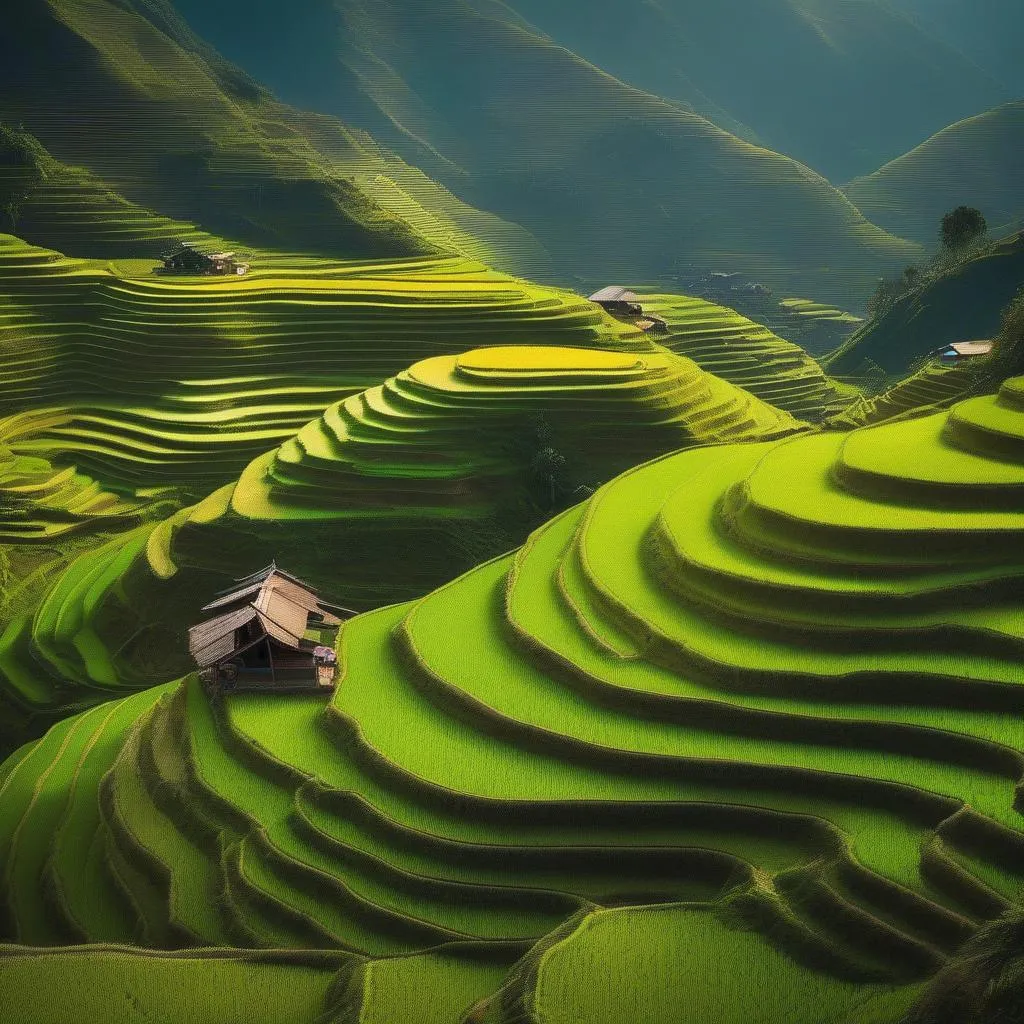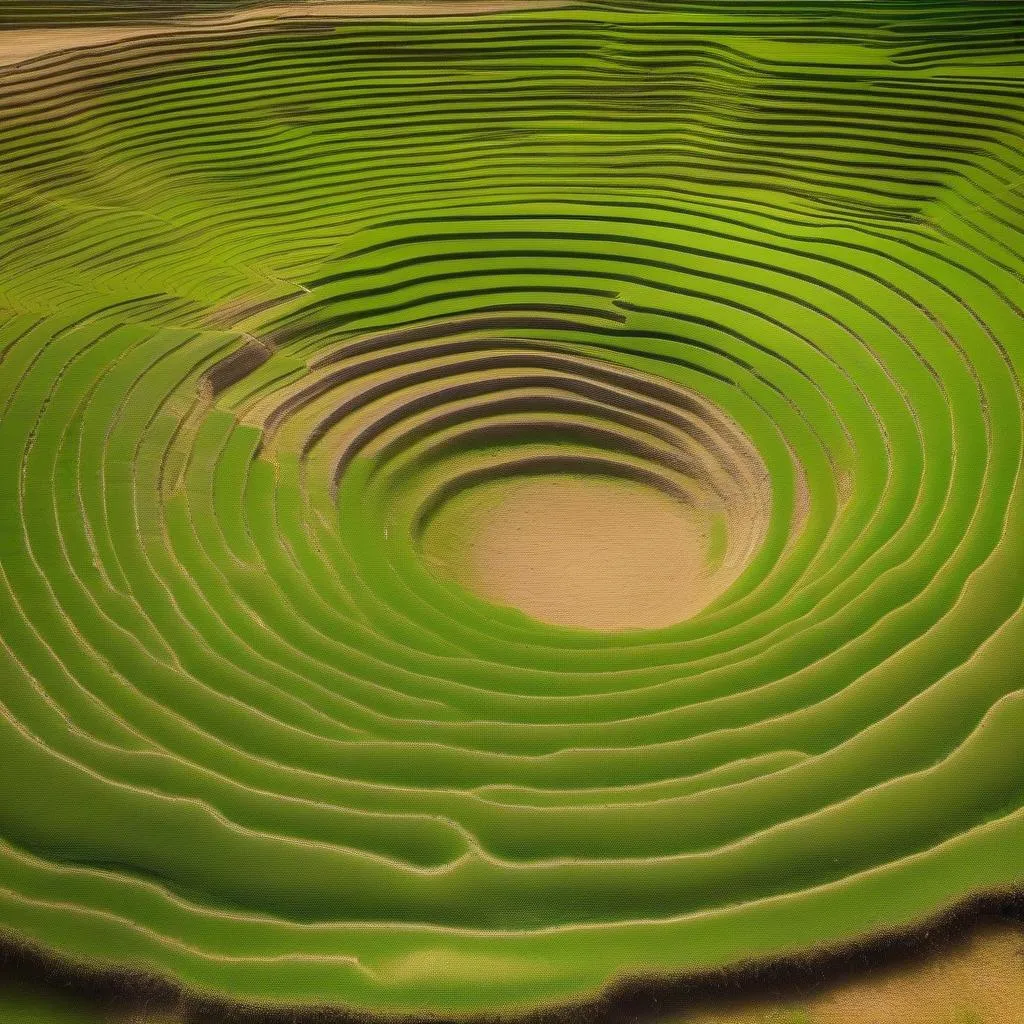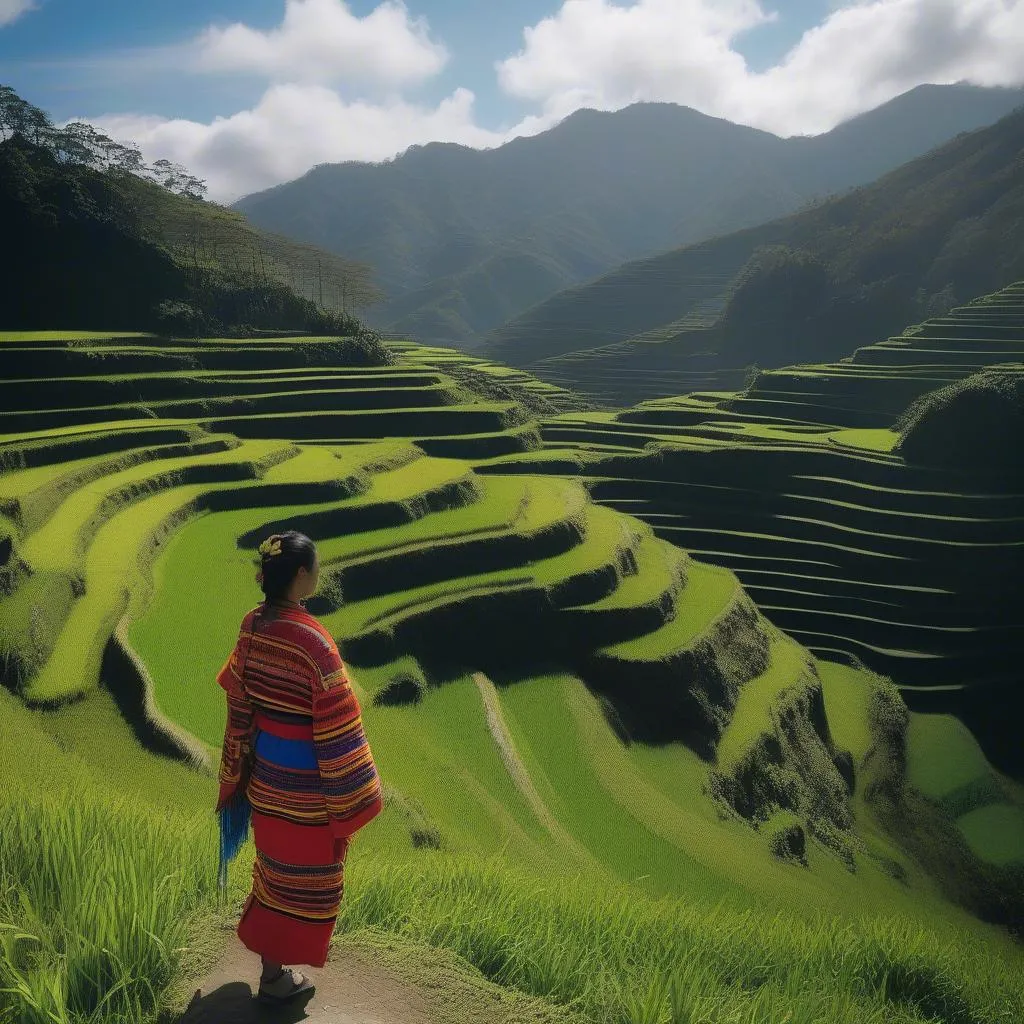Have you ever seen a photograph of rice terraces and been completely mesmerized by their beauty? They look like giant green staircases, carved into the sides of mountains, don’t they? These stunning feats of agricultural engineering aren’t just beautiful to look at – they represent the ingenuity and hard work of generations past. But where can you find these incredible landscapes? Let’s journey together to discover the captivating world of rice terraces and the cultures that created them.
Rice Terraces Around the Globe
While Southeast Asia is often the first region that comes to mind when we think of rice terraces, you might be surprised to learn that these agricultural wonders exist on nearly every continent! Their presence is a testament to the adaptability of rice as a crop and the resourcefulness of humans throughout history.
Asia: The Heart of Rice Terrace Cultivation
Southeast Asia, in particular, boasts some of the most iconic rice terraces globally.
- The Philippines: Journey to the Cordillera region of Luzon island, and you’ll encounter the breathtaking Banaue Rice Terraces, often dubbed the “Eighth Wonder of the World.” These 2,000-year-old terraces, carved by the Ifugao people, seem to touch the sky and are a UNESCO World Heritage Site.
- Indonesia: Bali is famed for its stunning natural beauty, including the Jatiluwih Rice Terraces, known for their intricate irrigation system called “Subak,” which reflects a harmonious relationship between humans and nature.
- Vietnam: The hillsides of northern Vietnam are adorned with vibrant green rice terraces, especially in Sapa and Mu Cang Chai. These terraces offer stunning views, particularly during the harvest season.
 Vietnamese rice terraces in Mu Cang Chai
Vietnamese rice terraces in Mu Cang Chai
Beyond Southeast Asia: Unexpected Rice Terrace Landscapes
Rice terraces aren’t limited to Southeast Asia; their reach extends to other corners of the world:
- China: The Yuanyang Rice Terraces in Yunnan province create a mesmerizing spectacle of colors as the sunlight dances on the water-filled paddies. These terraces, cultivated by the Hani people for over 1,300 years, are also recognized as a UNESCO World Heritage Site.
- Japan: Japan, known for its meticulous approach to agriculture, boasts the picturesque Hamanoura Rice Terraces in Saga Prefecture. These terraces, overlooking the Ariake Sea, are illuminated at night, creating a truly magical scene.
- Peru: In South America, the ancient Inca people left their mark on the Andes Mountains, and the Moray archaeological site offers a glimpse into their agricultural practices. The circular terraces, thought to be an agricultural laboratory, are a testament to the Incas’ ingenuity.
 Circular terraces of Moray
Circular terraces of Moray
Planning Your Rice Terrace Adventure
Are you ready to witness the beauty of rice terraces firsthand? Here are some tips for planning your trip:
- Research and Choose Your Destination: Consider your interests – are you interested in ancient cultures, hiking opportunities, or specific photography opportunities? This will help you narrow down the best rice terrace destination for you.
- Best Time to Visit: The ideal time to visit rice terraces varies depending on the location and your preference for witnessing specific stages of rice cultivation. The planting season often yields lush green landscapes, while the harvest season offers golden hues.
- Respect Local Customs: Remember that many rice terraces are located in areas with strong cultural traditions. Dress modestly, ask for permission before taking photos of locals, and learn a few basic phrases in the local language.
 Woman in traditional clothing walking through Banaue Rice Terraces
Woman in traditional clothing walking through Banaue Rice Terraces
FAQs: Unveiling More About Rice Terraces
Q: Why were rice terraces built?
A: Rice terraces were ingeniously designed to overcome the challenges of cultivating rice on steep mountainous terrain. They allowed for efficient water management, prevented soil erosion, and maximized land use.
Q: How are rice terraces constructed?
A: Constructing rice terraces is a labor-intensive process, often undertaken by hand. It involves careful leveling of the land, building retaining walls using local materials like stone or mud, and creating channels for irrigation.
A Final Note on Rice Terrace Exploration
Exploring rice terraces offers a unique perspective on the ingenuity of ancient cultures, the importance of rice as a staple food, and the delicate balance between humans and nature. So, lace up your hiking boots, pack your camera, and prepare to be amazed by the breathtaking beauty and cultural significance of these incredible landscapes!

